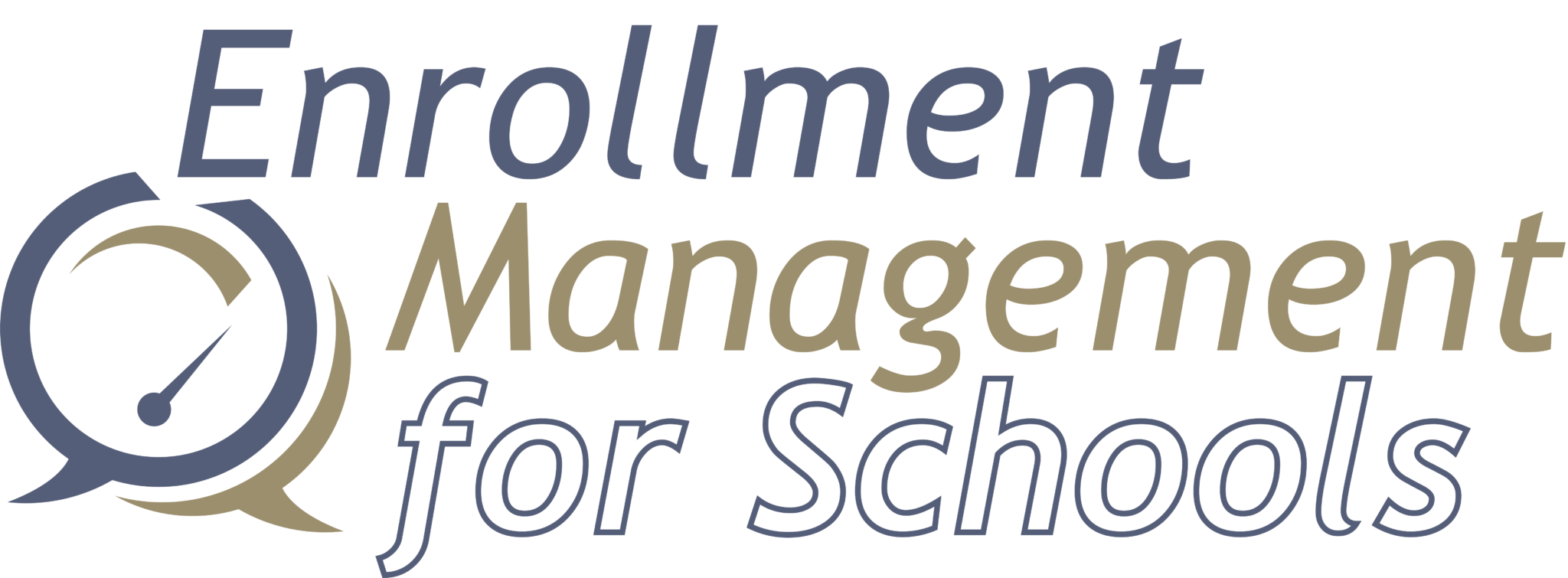 Discount rates seem to catch private schools off-guard and, in some cases, even lead to hard economic times or the closing of schools. Understanding the discount rate – what it is, what it does, how to track it and control it – can literally save some schools or, at the least, prevent them from going through serious financial hardship. At the trustee level, this always should be a part of their yearly discussion, beyond what may happen at the financial policy committee of the board.
Discount rates seem to catch private schools off-guard and, in some cases, even lead to hard economic times or the closing of schools. Understanding the discount rate – what it is, what it does, how to track it and control it – can literally save some schools or, at the least, prevent them from going through serious financial hardship. At the trustee level, this always should be a part of their yearly discussion, beyond what may happen at the financial policy committee of the board.
What is the discount rate?
The discount rate is the amount of financial aid allocated as a percent of the gross tuition. According to Mark Mitchell, vice-president for School and Student Services by NAIS, the following are the average discount rates for the NAIS schools:
- Boarding-Day Schools = 24.5%
- Day Schools = 14.7%
- Day-Boarding Schools = 20.4%
Here is how you calculate the discount rate. If, for example, your tuition is $20,000 and you fill 300 spaces with full-pay families, you could generate $6,000,000 in tuition revenue. If you give a discount to some families, i.e., providing them with financial aid of about $1,200,000, your school has a discount rate of 20%. This is computed by dividing $1,200,000 (the discount amount) by $6,000,000 (the gross tuition). In this case, you would receive $4.8 million in tuition revenues, assuming that all of the seats are filled and no further discounting is necessary.
In most schools, the financial aid amount may come from annual giving, endowment, auxiliary programs, federal grants, vouchers, etc. An endowment fund is the best long term solution. The second most commonly used funding source is annual giving funds. Most schools are limited with endowment and some don’t have robust annual funds.
What Are Financial Aid Dollars For?
Financial aid is the monetary assistance that you give to families who are interested in attending your school. Financial aid is a marketing tool with two primary focuses – development of student composition and revenue generation.
Financial aid allows you to attract students who will increase the quality of the educational experience which helps strengthen the program which in turn supports a greater quality applicants and re-enrollment interest. Secondly, it can be used to increase revenues. There are many names for this tactic, but I call it “invisible paper.”
What is “Invisible Paper?”
Using “invisible paper” is a temporary, dangerous solution to buy time to turn the discount rate problem around. This has to be done strategically and intentionally. Many schools may execute this action without a comprehensive and longitudinal plan. I wouldn’t recommend it without and exit strategy.
“Invisible paper” is when you have an empty seat that you can’t fill with a full-pay family, but would if you could. Instead of leaving it empty, you discount it and don’t actually have a source to pay for the discount. However, because most of your expenses will still be incurred, the school believes by having some portion of the tuition paid by the family, it is better than having the seat empty and not the additional tuition.
For example, you have a first grade class with 18 desks, which you need to fill to achieve your budget goals. You have three desks that will be empty for the fall, because there are no full-pay candidates available. You have expended all of your financial aid – the real dollars funded by annual giving, endowment or some other source. You still have three empty desks and will have to pay for the teacher, even if the desks aren’t filled. You fill the desk by offering the three seats to three different families at half the price. As far as the families are concerned, you call the other half a financial aid award. There is no funding source for this aid; it’s “invisible paper.” If the tuition is $30,000 each and each family can pay half the tuition, you will receive $15,000 from each family of which you would not have had available for your budget otherwise. Short term this is a good solution, but if you continue to add this “invisible paper” into your operation, you won’t have enough real money to pay your expenses.
What creates the problem?
One problem is created around a dearth in full-pay families. I have made pitches to several independent school associations to track full-pay numbers among their constituents’ statistics to provide a benchmark for schools. These organizations have all passively refused my suggestion. Individual schools don’t do it either. This number is critical to a school’s success and is a key indicator to show weakness or impending financial weakness, before it becomes a crisis. Was Mount Assisi Academy tracking their full-pay applicants prior to 2006-2007, before they hit their crisis state in 2014? The school reported “…enrollment has declined from 315 in 2006-2007 to 143 this school year.” How were they responding to this decline before it became a crisis?
Why don’t schools see the discount rate problem starting to happen?
Some schools have been wrestling with this problem for decades and with the ebb and flow of the economy, most have managed to sustain themselves by chance or by good leadership. However, as tuition continues to rise faster than the cost of living, online courses provide greater breadth which also fuels homeschooling, charter schools growing in greater numbers, and wealth growing much faster in other nations than the United States, the discount rate dilemma will close schools every year.
I believe schools don’t want to see it coming, they feel invincible like a teenager does. The “Rose-colored Glasses Syndrome” keeps them out of that reality. Or the leaders just don’t understand the impact of the discount rate on the school’s financial situation. The former is what I experienced with one school. I warned the board at a day school that the problem was coming and showed them the data, based on the school’s slowly declining full-pay statistics and census data. They politely said that they didn’t believe me. As the full-pay applicant number starting shrinking further, they chose to invest in financial aid to carry them while they waited for matters to turn around and they didn’t invest in marketing strategies to recruit more full-pay families. They went from a discount rate of 15% to 25% which they can’t sustain.
Maybe Aptos Academy with 14 years and unstable leadership had a reason for closing its doors. Maybe the same is true for St. Theresa Catholic School. Or maybe Veritas School started in 1998 could not build enough financial roots. What about Manlius Pebble Hill, dating back to 1869? What haven’t they quite understand as their enrollment started slipping probably back in 1970 when they merged with another school?
The Snowball Effect of a Bad Discount Rate:
You can see why school’s crash. It’s a snowball effect and it’s hard to stop without a benefactor or great strategic marketing thinking. Schools can delay the crisis with a large donation or maybe pull out of it with a sizeable positive swing in the economy, but often those relationships have not been developed far enough to get that money and who can count on the economy.
The first sign of a problem is the shrinking numbers of full-pay students. Then, the quality of the student body is affected. The school admits less well-matched full-pay students which creates pressure on the quality of the program in the classroom. Somewhere in the process, the school starts using the “invisible paper” strategy. If they address the full-pay challenge, they have a chance to slow down the process and maybe turn it around. If they don’t, but still hold on for a long period of time, the facilities start to deteriorate with no money to pay the upkeep. The leadership changes and the board may not be able to hire the right person for this job or maybe the board is dysfunctional. Rookie faculty members are hired to replace the better ones who see the writing on the wall. The educational experience continues to deteriorate. I am amazed at how long they can hang on.
Schools can pull it out with the right leadership. Dr. Parnell Hagerman and her team did this for Oldsfield School, which in 2007 reported that it would close if they couldn’t get the right financial support. Eight years later, they are still educating young women.
Figure out how to cost what you charge
If we can’t figure out how to charge what we cost, we need to determine how to cost what we charge. I just want to mention the fact that many schools discount for every student, although it may not be a published discount. By this, I mean that schools charge tuition per student of “X”, when the real cost of educating the student is the higher “Y” price. This practice is a part of the discounting dilemma. I don’t know if it is a necessary evil, another topic for discussion from a Chief Financial Officer.
Become a Proactive Board
Be convinced that in most cases, the problem is exacerbated by poor leadership – trustees, heads, and other senior administrators. The solution to the problem is the same; you have to have the right people in the right positions. If trustees want to fix the problem, they have to attack it, before it becomes a crisis. Here are a few thoughts.
- Understand the Discount Rate.
- Ensure that the right leadership is in place.
- Track the full-pay numbers.
- Create a full-pay marketing plan.
- Use the “invisible paper” when needed, but with an intentional design and exit strategy.
- Create an effective top 5% donors marketing plan.
- Ensure quality of program.
- Figure out how to cost what you charge.
- Get rid of non-believers in the school.
All of this is easier said than done, but if you have the right leadership, you can figure out how much of each lever you can pull to get the most out of each effort above. The alternative is even worse. The alternative is to get your name on this LIST.

